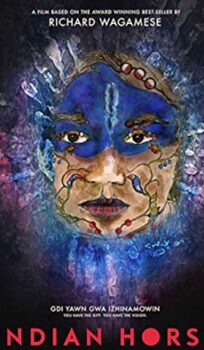Indian Horse(2017)
Submitted by Julio M
Despite some occasional displays of discrimination against him and his peers, Saul (played as a teenager by Forrest Goodluck) seems to be bound to a good future in hockey and gets summoned by the Toronto Monarchs. He reluctantly accepts the offer, but things quickly sour up for him, since he is the relentless target of open harassment from everyone around him -game attendees, teammates and opponents-, due to being Indigenous -or “Indian”, as it was, of course, widely used back then-, eventually snapping and getting into fights with other players, which has him confined to the penalty box; he also receives the unexpected visit of Father Gaston (Michiel Huisman), from the Residential School where he spent time as a child, which seems to unsettle him, especially when Gaston openly admits that “those things that took place at the school were wrong”. Dejected and angry, seeing how there would be no place for him there, he quits the team and descends to alcoholism.
Over the course of the following decade, Saul (now played as an adult by Ajuawak Kapashesit) moves around and works odd jobs to barely support himself and his drinking; he even finds, in one instance, his former Residential School mate Lonnie (Nathan Alexis) in an alley, now a run-down alcoholic as well. Reaching the breaking point, he is admitted to a rehab facility, where he can finally open up about all the abuse he has been victim of, throughout his life -including sexual, at the hands of Father Gaston, which gets revealed when he travels once more to the now abandoned school facility and faces the demons of his past.
In a final effort to heal and reconnect with his ancestry, Saul is seen returning to his childhood surroundings, where he can see and feel the spirits of those who were part of his early life. Then, he joyfully reconnects with his foster family and former Moose teammates, all happy to see him again.
The movie ends with title cards informing that more than 150,000 Indigenous children were forcibly located into the Residential School system between the late 1800s and 1996, with 6,000 of them (presumably more) recorded as having died during this time; also, how the Canadian Federal Government, in 2008, issued a formal apology to the survivors and their descendants, and set up the Truth and Reconciliation Commission, in order to help current generations to come to terms with this dark chapter of North American History.

